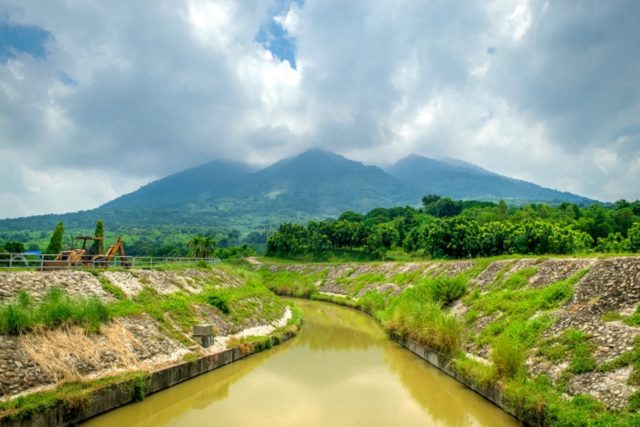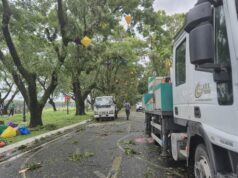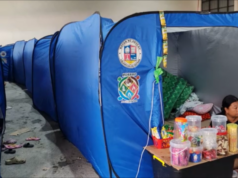
The younger generation holds the key in shaping and transforming the country’s future, including the environment.
Given this, the Philippine Information Agency (PIA) Region 3 has partnered with the Department of Environment and Natural Resources (DENR) in the conduct of Kilos Kabataan para sa Saribuhay [Biodiversity] forum to encourage the Central Luzon youth to do their fair share in pushing for biodiversity conservation and natural resources management.
About 90 students from National University Clark, Holy Cross College-Pampanga, City College of San Fernando Pampanga, and Our Lady of Fatima University Pampanga Campus participated in the first leg of the forum.
Threats to the Philippines’ biodiversity
The Philippines is one of the 17 megadiverse countries in the world. It plays an important part of the global biodiversity.
It ranks fourth in the world in bird endemism, fifth in mammal endemism, fifth in number of plant species, and eight in reptile endemism.
Central Luzon makes a huge contribution to the country’s rich flora and fauna.
The province of Aurora is home to the Northern Sierra Madre forest monitor, and the Philippine Eagle.

Found in the forests of Subic Bay and Bataan are the world’s largest bats including the giant golden crowned flying fox and the large flying fox.
The Pantabangan-Carranglan watershed in Nueva Ecija province is a habitat to Rafflesia consueloae, the smallest among the giant Rafflesia flowers.
In addition, Mount Arayat, in Pampanga is home to 49 species of trees and plants, 86 species of birds, 14 species of mammals, and 11 species of reptiles.
Mount Tapulao in Zambales, the second largest mountain in Luzon, has 305 species of plants and 141 species of animals. Found in it are seven insectivorous bats, three of which are endemic in the country including the yellow-faced horseshoe bat, large-eared horseshoe bat, and orange-fingered myotis.
Bird species that are also seen in the region’s forests are Philippine Eagle-owl, Luzon bleeding heart pigeon, and ashy thrush.
In terms of marine biodiversity, the coasts of Bagac and Morong in Bataan, and the beaches of Aurora are known nesting grounds of three out of five species of marine turtles in the country. These are the olive ridley, hawksbill, and green sea turtle.
Tridacna gigas, one of the world’s largest shells, can be found in Bataan and Zambales waters.
DENR Region 3 Communications Development Officer Joshua Rei Ubaldo highlighted that most of these species are threatened due to climate change.
“Climate change is one of the most significant drivers of biodiversity loss. We don’t just realize but animals and even plants are moving poleward, meaning from the equator, they are climbing, going to the North pole, or going down to the South pole in order to escape the heat. With climate change, most of our plants and animals are dying,” he said.
Other reasons for damage to biodiversity include illegal human activities such as poaching, wildlife trade, and fishing.

The grave effects of climate change in the country’s biodiversity calls for collaboration among stakeholders in protecting the planet.
Ubaldo underscored that the youth sector can make a big contribution in biodiversity conservation as it comprises about 30 percent of the country’s population.
“What does this mean is that you [the youth] have a voice and you need to use it. You need to use your voice to speak up for our biodiversity that can’t speak for itself, literally,” he stated.
He encouraged the young population to plant trees and mangroves, participate in river and coastal cleanup and rehabilitation, and conserve energy and water.
The youth can also do their part in reducing, reusing, and recycling; refusing potential waste sources; and participating in environmental dialogues.
Promoting and mainstreaming the country’s biodiversity
The country’s struggle on biodiversity loss due to climate change and illegal and irresponsible human activities should not stop within oneself. The advocacy on biodiversity conservation and natural resources management should be reverberated.
Eco-defender and storyteller Celine Murillo emphasized that the youth may become young storytellers by utilizing the Internet and social media to promote and mainstream the country’s biodiversity.
“Start by knowing… Ang pagkilala sa ating sariling saribuhay ay isang paraan ng pagpaparangal at paglaban. Sa pamamagitan nito, maaalala natin at maipagdiriwang ang malalim na ugnayan natin sa ating tinubuang lupa, at ang pagkadakila ng ating mga ninuno[Knowing our own biodiversity is a way of honoring and fighting. Through this, we will remember and celebrate our deep connection in our native land, and the greatness of our ancestors,” she pressed.
Given that humans are part of it, Murillo further pressed that knowing biodiversity is a way of reclaiming and repelling the narrative of Filipino identity despite the country’s history of colonialism.
The youth may produce content and stories, join organizations, or even form their own organizations and champion biodiversity against the odds.
Filipinos are highly dependent on the country’s rich biodiversity and natural resources.
Biodiversity is a source of timber, food, fiber, and medicine. It also provides water for irrigation, drinking, energy, and industrial uses.
It is likewise a source of livelihood and food for everyone’s tables.
Given these, PIA Assistant Regional Head Carlo Lorenzo Datu urged the youth to heed the call for biodiversity conservation and natural resources management.
“Let’s make a commitment today to educate ourselves and others about the importance of preserving our environment. Let’s use our online and offline platforms to promote biodiversity and join hands as advocates for our planet,” he said.
The youth’s pledge
For students, responding to the call for the conservation of biodiversity should be beyond the campus. For campus journalists, stories about the environment should serve the community and the society at large.
Kapampangan campus journalist Patrick Bryan Porras pledged that he would continue writing stories to educate and mobilize the youth to take care of the environment and biodiversity.
“This should serve as a reminder that we, the youth of this generation, can do so much even in our little ways to help our environment regain its original features. Our publication as well is posting a call for action to take care of our biodiversity and our environment, and we go to far-flung communities to showcase their stories related to our environment,” he shared.
Named as the Most Outstanding Campus Journalist in Luzon for 2023 during the Outstanding Campus Press Awards of the University of the Assumption, Porras encouraged other journalists to be catalysts of change by participating in the preservation of biodiversity through journalism.
“Behind our commitment to campus journalism is our responsibility to preserve our biodiversity and our planet at large so that the next generation will still benefit from what we are enjoying on our planet right now,” he stated.
Everything in this world is connected to everything else. Humans must recognize that they are not only living on the planet, but they are also part of it. Hence, each individual must do their share in protecting biodiversity and natural resources as it what keeps everyone living.(CLJD/JLDC-PIA 3)




